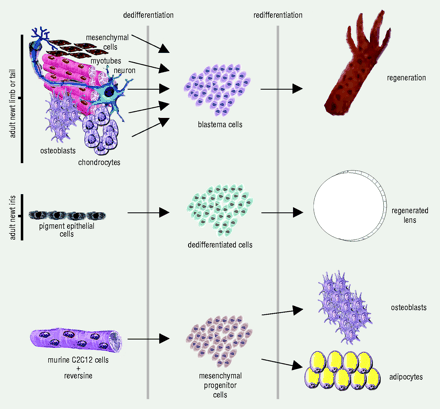
- Institution: Stanford Univ Med Ctr Lane Med Lib/Periodical Dept/Rm L109
- Sign In as Member / Individual
Stem Cells from Differentiated Cells

Transdifferentiation in urodele limb and lens regeneration and in a committed murine cell line. After amputation of the newt limb (or tail) the intact terminally differentiated cells (such as, mesenchymal cells, myotubes, nervous tissue, bone, or cartilage) dedifferentiate by losing the characteristics of their origin. This dedifferentiation process produces the blastema cells, which then redifferentiate to reconstitute the lost limb. After lentectomy, the dorsal iris pigment epithelial cells lose their pigments and become dedifferentiated cells, which consequently regenerate a perfect lens. A small molecule, reversine, is able to induce dedifferentiation of myotubes formed by murine C2C12 cells. This dedifferentiation produces mesenchymal progenitor cells that are able to differentiate to different cell types, such as adipocytes and osteoblasts. According to this scheme, the reversine produced progenitor cells could be analogous to the blastema cells or other dedifferentiated cells used during regeneration in urodeles.


